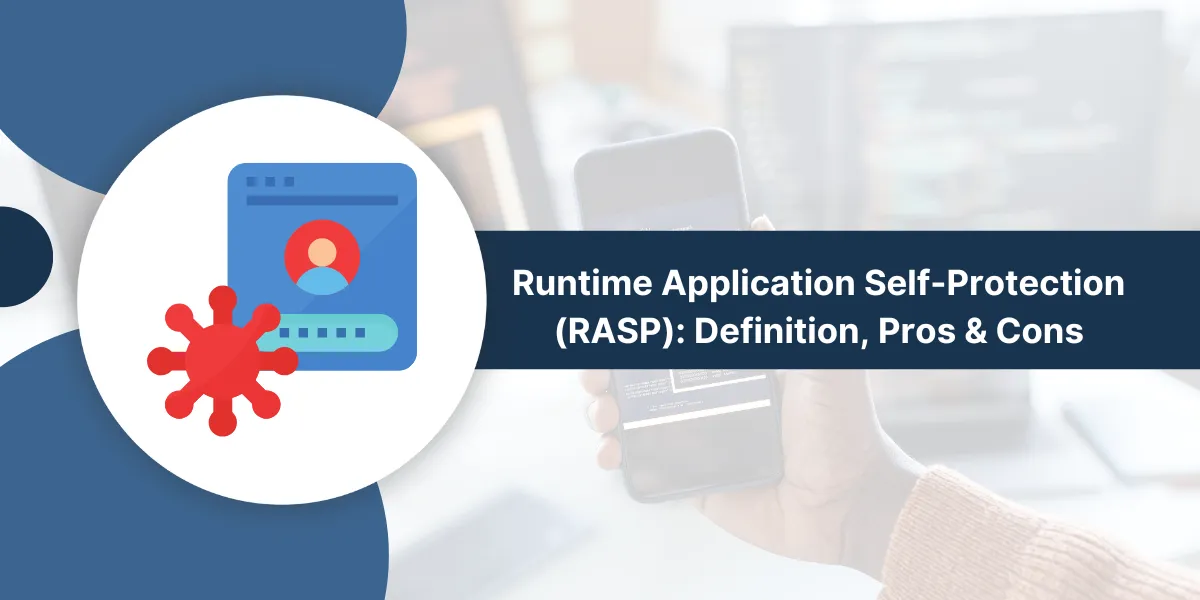What is Runtime Application Self-Protection?
Runtime Application Self-Protection (RASP) functions as a technology which embeds security capabilities into operational software applications to stop attacks during runtime. RASP functions as a security technology which detects and blocks computer attacks by utilizing runtime instrumentation to leverage information from running software.
RASP functions differently from traditional security tools because it operates inside software applications to automatically detect and analyze and protect against malicious activity in real-time during application execution.
RASP Protects Your Applications in Real-Time Through What Mechanisms?
RASP uses application internal data and state understanding to detect runtime threats which would otherwise go undetected. The technology works by:
- Runtime Instrumentation: Functions as a library on web application servers to defend against threats at the application code level
- Behavioral Analysis: The system examines program behavior to defend applications against harmful data and behavioral patterns
- Real-time Monitoring: The system intercepts all application calls to the system to ensure security while performing direct data request validation inside the application
What Are the Key Benefits of RASP Security?
Core Capabilities
- Real-time Threat Detection: Identifies attacks as they occur during application execution
- Automatic Response: Blocks malicious activities without human intervention
- Context-aware Protection: Uses application context to distinguish between legitimate and malicious behavior
- Zero-day Protection: Protects applications from a variety of cyber threats that can only be detected while the application is running
Protection Against Common Threats
- SQL injection attacks
- Cross-site scripting (XSS)
- Remote code execution
- Malware and malicious code that may not be visible in static or dynamic code analysis
- Buffer overflow attacks
- Authentication bypass attempts
How Does RASP Compare to WAF and Other Security Solutions?
|
Feature |
RASP |
WAF |
Traditional Security |
|
Deployment |
Inside application |
Network perimeter |
External to application |
|
Visibility |
Full application context |
HTTP/HTTPS traffic only |
Limited application insight |
|
False Positives |
Much more accurate than WAF through instrumentation |
Higher false positive rate |
Variable accuracy |
|
Zero-day Protection |
Yes |
Ineffective against new vulnerabilities until signatures are added |
Limited |
|
Performance Impact |
Has to run locally with some performance overhead |
Minimal |
Variable |
Why Should You Implement RASP? (Top Benefits)
Enhanced Security Posture
- The solution provides complete application execution monitoring which detects both known and unknown security threats.
- The solution protects the application from within its own layer.
- RASP solutions achieve better accuracy because they monitor actual application behavior without needing recalibration.
Operational Advantages
- Minimal Configuration: Self-adapts to application behavior patterns
- Real-time Response: Immediate threat blocking without manual intervention
- Developer-friendly: Integrates seamlessly into development workflows
- Compliance Support: Helps meet regulatory security requirements
How to Successfully Implement RASP in Your Organization
Pre-Implementation Considerations
- Application Assessment: Evaluate application architecture and compatibility
- Performance Testing: Assess potential impact on application performance
- Security Policy Definition: Establish rules for threat response and escalation
- Integration Planning: Plan deployment strategy with development teams
Deployment Strategy
- The initial deployment should begin with non-critical applications for testing purposes.
- The implementation should proceed through applications in a methodical sequence.
- The system requires complete logging and alerting functionality for monitoring purposes.
- The RASP management requires development and security team members to receive training.
When Should You Choose RASP Over Other Security Tools?
Ideal Use Cases
- Web Applications: E-commerce platforms, financial services, healthcare systems
- API Security: Protection for REST and SOAP APIs
- Legacy Applications: Adding security to older applications without code changes
- DevSecOps Integration: Embedding security into CI/CD pipelines
Complementary Technologies
Organizations can develop a comprehensive defense-in-depth security strategy by implementing WAF and RASP together to enhance their overall security posture. RASP functions optimally when integrated with:
- Web Application Firewalls (WAF)
- Static Application Security Testing (SAST)
- Dynamic Application Security Testing (DAST)
- Container security solutions
What Are the Pros and Cons of RASP Technology?
Advantages of RASP Technology
- Real-time threat detection and response
- Low false positive rates
- Protection against zero-day attacks
- Application-specific security context
- Minimal maintenance requirements
Limitations of RASP Technology
- Performance overhead due to local execution
- Application compatibility requirements
- Initial deployment complexity
- Limited to runtime threats only
Final Thoughts
The process of enabling HTTP/2 on IIS becomes simple with IIS 10.0+ and Windows Server 2016+. The HTTP/2 protocol activates automatically when HTTPS receives proper configuration with a valid SSL certificate. Your website will experience performance improvements through multiplexing and header compression and reduced latency when you focus on proper SSL setup.
Frequently Asked Questions (FAQs)
How does RASP differ from WAF?
RASP works inside applications and provides context-aware protection. WAF operates as an external security layer and filters incoming traffic based on predefined rules.
What types of attacks can RASP prevent?
RASP prevents SQL injection attacks, cross-site scripting, command injection, and unauthorized access attempts. The system also blocks zero-day exploits and application-level threats.
Is RASP better than traditional security methods?
RASP offers more accurate threat detection than traditional security tools. The technology provides real-time protection and reduces false positives through direct application integration.
Does RASP affect application performance?
RASP creates minimal performance impact when properly configured. Modern RASP solutions optimize resource usage and maintain application speed.
How does RASP integrate with existing security tools?
RASP works alongside existing security tools like firewalls and antivirus software. The system enhances security coverage by adding runtime protection capabilities.

Priya Mervana
 Verified Web Security Experts
Verified Web Security Experts
Priya Mervana is working at SSLInsights.com as a web security expert with over 10 years of experience writing about encryption, SSL certificates, and online privacy. She aims to make complex security topics easily understandable for everyday internet users.



